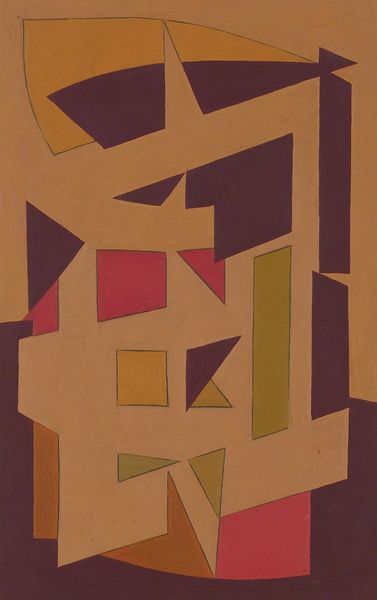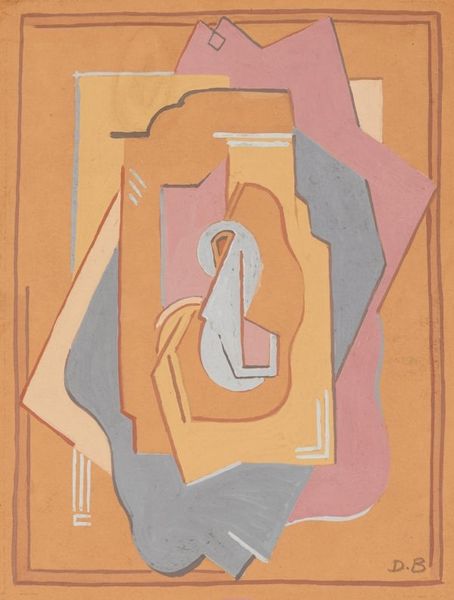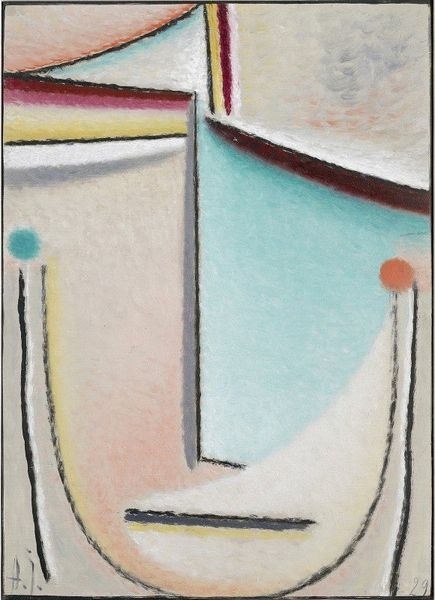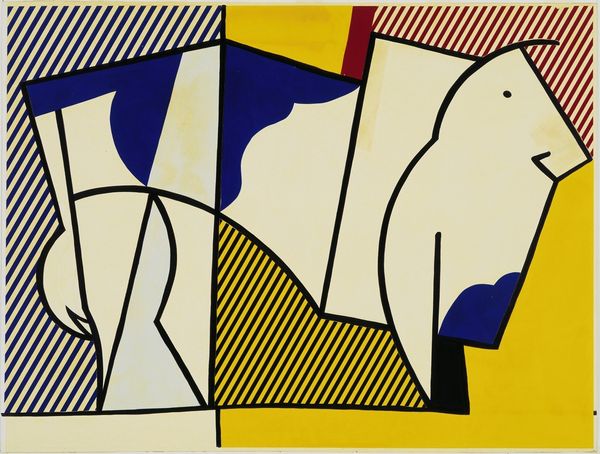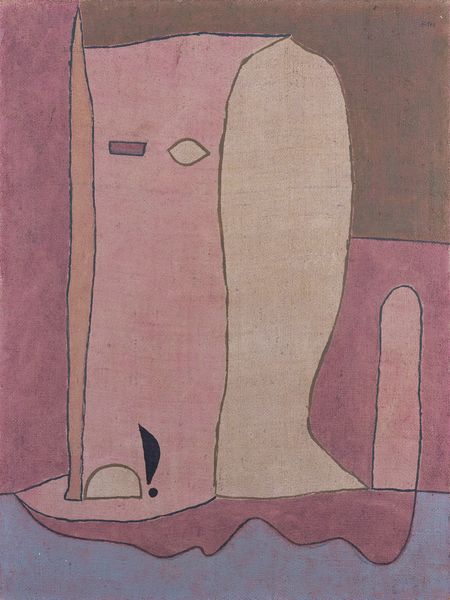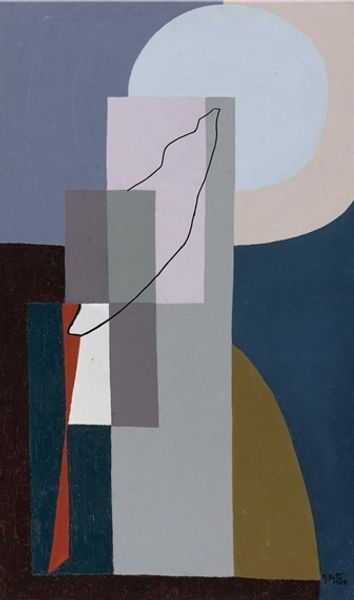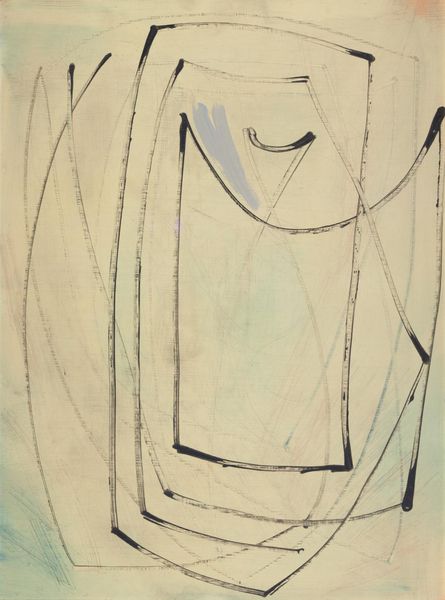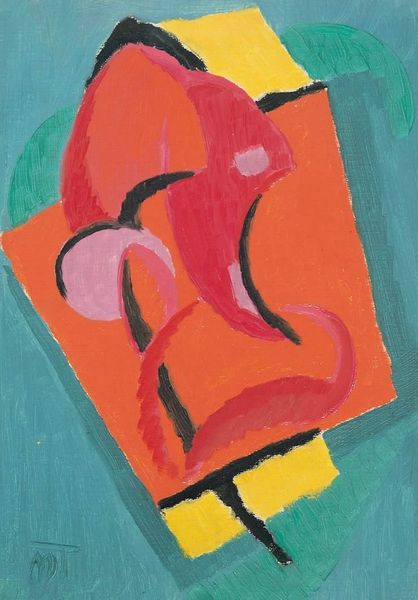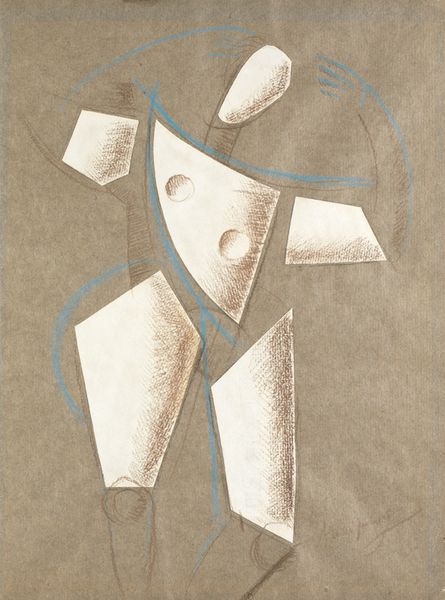
#
geometric
#
abstraction
#
line
#
modernism
Copyright: Richard Mortensen,Fair Use
Curator: Richard Mortensen's "Hélène," created in 1956, presents us with a compelling exploration of geometric abstraction. Editor: It’s quite striking! The light pink backdrop immediately softens the composition. It's as if the yellow geometric form is pressing out of the canvas against those linear elements, those meandering black and blue lines. Curator: Mortensen, deeply influenced by the intellectual currents of his time, sought to create a visual language free from the constraints of representation. We can observe the legacy of modernism's efforts to distill form to its most essential. "Hélène" uses simplified shapes and clean lines characteristic of abstract art, though it subtly alludes to the female form. Editor: That reference complicates the reading in a really interesting way, shifting it out of pure formalism. How does the historical and sociopolitical landscape of the 1950s factor into this abstraction, particularly in its engagement with gendered representation? Curator: In postwar Europe, abstraction served as a powerful tool for artists seeking to break away from tradition and express new possibilities, but we cannot separate that project from gender, identity and expression. The bold move of placing “Hélène”, perhaps referring to the iconic Helen of Troy, within such geometric framework invites dialogue. How does ideal beauty conform against these hard lines and asymmetrical arrangements? Editor: It feels quite subversive when you consider the painting within its period! By abstracting Hélène's form, is Mortensen perhaps resisting the objectification often inherent in classical portrayals, proposing an ambiguous alternative, reflective of a changing societal view of women? Curator: It raises such critical questions. The use of color further adds to the painting’s depth. The pink provides a delicate counterpoint to the dynamic yellows and blues. The lines divide, suggest directions of movement... Editor: Absolutely. Considering how museums and galleries function to solidify power structures, I wonder how works like these challenge conventional understandings of beauty, especially through abstraction that almost seems intentionally disruptive? Curator: Indeed. "Hélène" is a vibrant artwork that encourages critical reflection about visual language. It makes us consider the relationships between gender, power, and representation within art. Editor: It seems fitting that we reconsider beauty in abstract terms. The politics of abstraction mirror the politics of the mid-century!
Comments
No comments
Be the first to comment and join the conversation on the ultimate creative platform.


